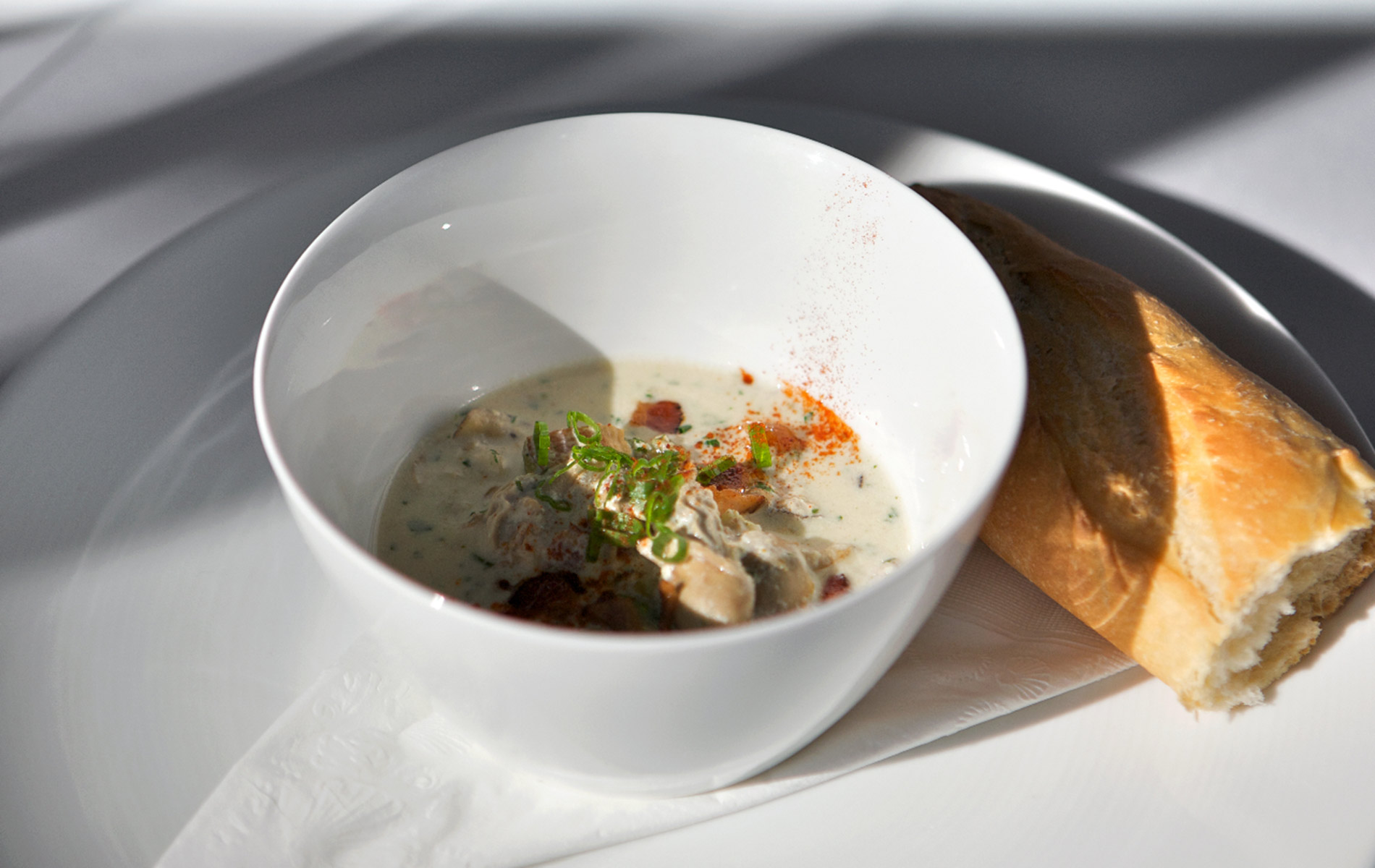
vie-magazine-love-of-food
The Oyster Is Our World
By Phillip McDonald | Photography by Romona Robbins
I absolutely love the fall months on the Emerald Coast. Your favorite spot at the bar is available, commutes are traffic-free, and crisp weather, college football, and fire-in-the-sky sunsets are yours to enjoy. This bustling tourist mecca becomes the quaint stretch of beach that drew many of us to live here. As a cook, the life I live on the coast this time of year means an abundance of flounder, gulf shrimp, and, of course, the crown jewel of our waters—the Apalachicola Oyster.
The flavor of freshness in the fall and winter months is those delicious bivalves from our neighbors in Apalachee Bay. Locavores rejoice! Nothing in the Gulf captures the sweet, salty taste of the sea quite like the delicate and enigmatic oyster, and fall is the best time to enjoy these fruits of our local waters. The cold water temperatures slow the oysters’ growth, thus giving them a leaner, crisper texture with a bit of saltiness. Apalachicola is the premier oyster appellation in the US if not the world; 90% of the oysters consumed in Florida—and 10% of the world’s consumption—come from this spectacular bay. Apalachicola is the last place in the US where wild (not farmed) oysters are still harvested manually by men and women in small boats with oyster tongs. You can get a visual of this trade by crossing the bridge from St. George Island as the sun rises over Apalachee Bay. It is an impressive sight to witness the many fleets of skiffs on this rich estuary plucking their livelihood with giant tongs that look like oversized chopsticks.

Apalachicola Oyster Stew
The first oyster of the fall, for me, is an instant revelation of nostalgia to my childhood, when my mom would “fix” me an oyster on a saltine with cocktail sauce and lemon. Good food transports you. There are multitudes of ways to enjoy our local oysters, but my preferences are either raw on the half shell or cooked in a silky stew. These are two ways in which you can’t go wrong to enjoy the essence of this delicacy. I know that some purists think that raw is the only way to go, but oyster stew done right is just as satisfying. Oyster stew is a Southern culinary staple that is prepared in a variety of techniques and flavors, but the constant is a cream-based broth similar to New England clam chowder. This stew is the perfect thing to warm your bones and increase your vigor when the winds here come out of the north and the mercury drops. It is also a great way to introduce oysters to your friends or family who are not adventurous enough to eat them raw. Oysters also provide good sources of zinc and omega-3 fats, so these bivalves offer up more than just incredible flavor. If you are an oyster virgin and need to be coaxed into eating the delicate mollusk, trying this stew will get you on the path of least resistance. In the words of the famous food writer M.F.K. Fisher, “Often the place and time help make the food what it becomes.”
— V —
Phillip McDonald is the chef/owner of Table Five, a personal chef service that specializes in dinner parties and private home events along the Emerald Coast. Visit him online at www.TableFiveChef.com.
Share This Story!
KEEP UP WITH THE LATEST STORIES FROM VIE


































































































































